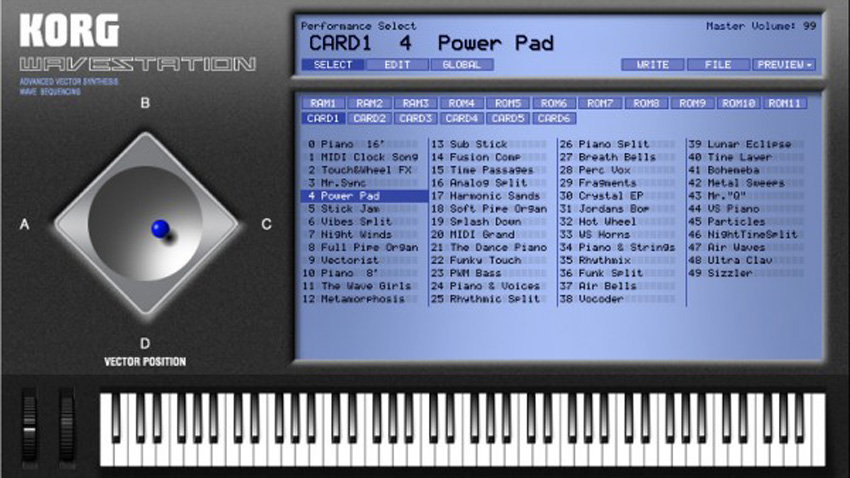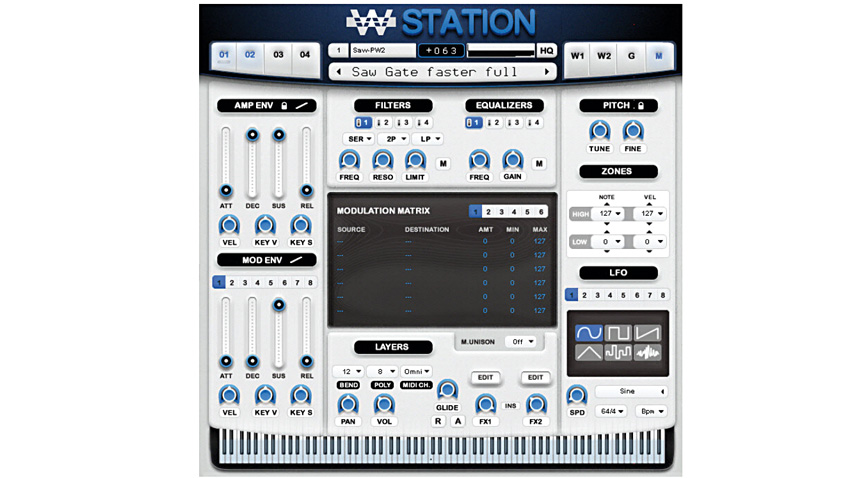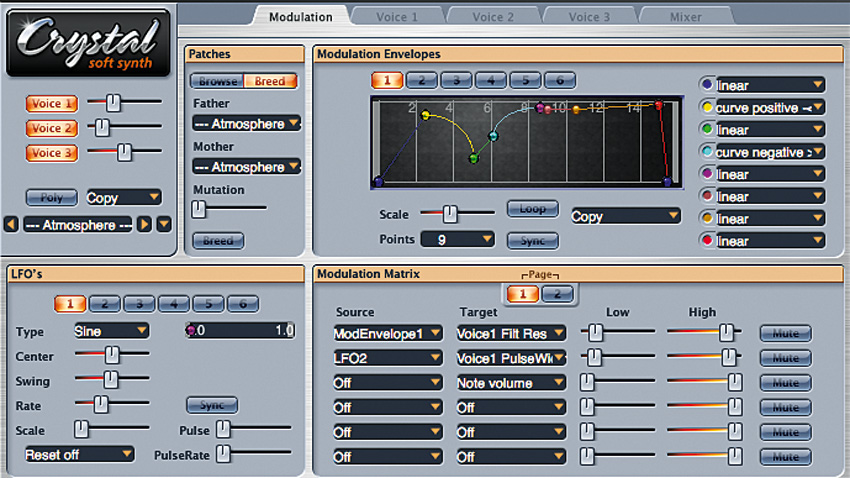Blast from the past: Korg Wavestation
Very few sample-playback machines can be called classics, but Korg's ended up shaping the sound of an era
Image courtesy of Perfect Circuit Audio
The Wavestation is an odd one. Released in the early 90s heyday of (often generic) sample-based hardware ROMplers, it offered a decidedly distinctive sound. Sure, it was packed with samples, but in its initial version, those samples tended toward innovation rather than imitation. No nylon string guitars or grand pianos here, thank you. Other such synths of the day were pitched as preset playback devices, but this… this was different.
The Wavestation rose from the ashes of Sequential Circuits - the company behind many a classic instrument, including the Prophet-5 and the Prophet VS vector synthesiser. It was to the latter that the Wavestation bore the keenest resemblance, sharing with it a powerful vector synthesis technique that allowed multiple oscillators to be blended over time via the use of a joystick. When Sequential called it a day, some of its boffins took up residence at Korg, bringing with them the still-viable technology of the VS, supercharged and stuffed into the Wavestation's sleek black frame.
Yet vector synthesis was only part of the story. The Wavestation also included "wavesequencing", a means by which its many waveforms could be arranged into a linear sequence with each step including its own volume, pitch, step length and crossfade parameters. This allowed (patient) users to create elaborate, ever-changing sounds ranging from slowly evolving textures to powerful pulsating rhythms. Later iterations of the Wavestation would add a slew of standard samples - pianos, guitars, and a massive collection of drums and percussion - facilitating the creation of entire musical passages of staggering depth.
"Yet the Wavestation was not without its shortcomings, not least being the lack of filter resonance."
These wavesequences (and individual waveforms) could be layered into Patches and combined into Performances, increasing the complexity of the sounds. To top it all off, Korg included better built-in effects processors than those in many competing 'workstations'.
Yet the Wavestation was not without its shortcomings, not least being the lack of filter resonance. You could fake it using an effects patch, but the voice filters themselves were little more than high-frequency shelving EQs, though there was a built-in exciter to spice things up. Mind you, analogue synthesis had, at the time, been declared dead, and Korg were not alone in eschewing the resonant filter in favour of an unashamedly digital signal path.
Another problem was that programming your own wavesequences required a lot of patience. Those who invested the time were rewarded with sounds that were impossible to achieve elsewhere, but few did. Judging by its presence on countless soundtracks and advertisements, many users seemed unable to navigate beyond the first preset sound.
Get the MusicRadar Newsletter
Want all the hottest music and gear news, reviews, deals, features and more, direct to your inbox? Sign up here.
Strangely, popular as it was, the Wavestation was never really given a proper follow-up. Korg released a couple of rack-mounted variants and two versions of the keyboard, but only belatedly revived the technology in its recent workstations. A few software developers have adopted limited variations on wavesequencing, and Korg themselves offer a virtual version, even going so far as to add - at long last - that resonant filter.
The great Korg Wavestation emulations

Korg Wavestation (Legacy), $50
Initially released as part of the Legacy Collection bundle, Korg's virtual version of the Wavestation is as good an emulation as you are ever likely to find. It is, frankly, dead on, with everything that made the original great (barring the audio input of the A/D rackmount version), plus those much-desired resonant filters.
Find out more about Korg Wavestation (Legacy)

Wusik Wusik Station V7, $100
With its expansions, bundles and upgrades, it's often easy to forget that Wusik Station is a worthy successor to the Wavestation's throne. Stuffed with excellent samples, this Windows-only workstation offers powerful wavesequencing and a deep synthesis architecture. Some of its features have been worked into the cross-platform Wusik 4000.
Find out more about Wusik Wusik Station v7

Green Oak Crystal
Crystal is nothing less than a freeware classic - you may well already have it on your hard drive. With its combination of semimodular routing and multiple synthesis techniques, it's an amazingly powerful instrument. One of its best features is the ability to string sampled waveforms into a wavesequence under the control of its flexible multistage envelopes.


Computer Music magazine is the world’s best selling publication dedicated solely to making great music with your Mac or PC computer. Each issue it brings its lucky readers the best in cutting-edge tutorials, need-to-know, expert software reviews and even all the tools you actually need to make great music today, courtesy of our legendary CM Plugin Suite.










